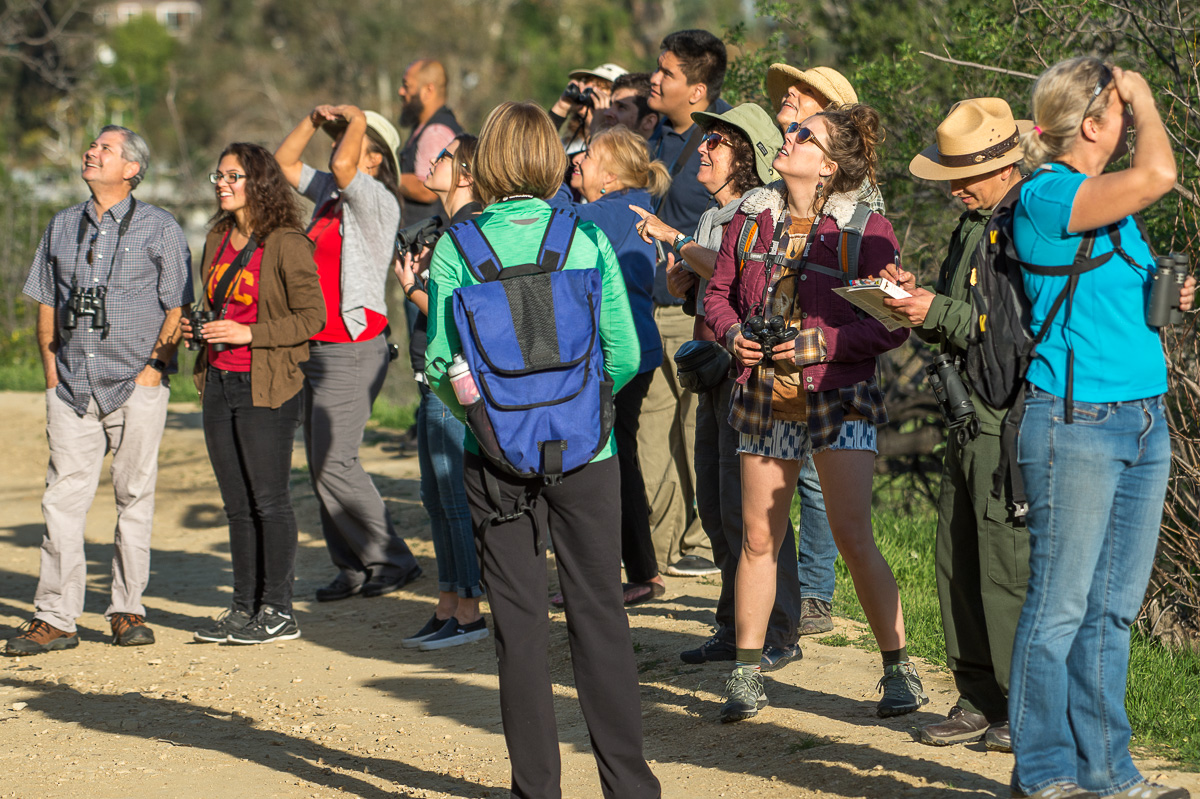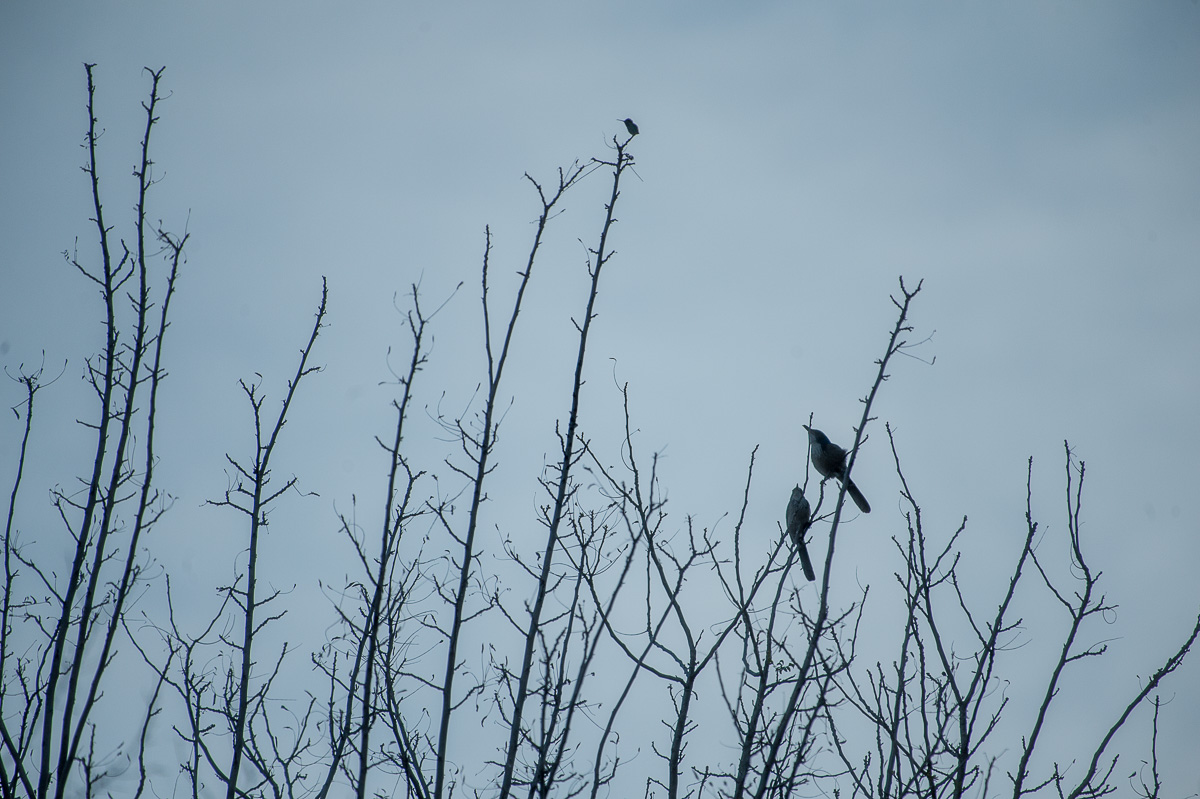The higher you climb in Debs Park in Los Angeles, the less you hear of the traffic on the 110 Arroyo Freeway and the more you hear chirps, tweets, buzzes, clinks, coos and trills.

Up hidden in a cluster of trees and foliage, a ruby-crowned kinglet was singing an inventive collection of notes, a delightful ditty that stopped a group of about 20 birders in their tracks.
“We’re going to count that one even though we didn’t see it,” said the bird walk leader Hector Cervantes of the National Park Service who jotted the name down on his pad, adding that bird to the growing list. “If we hear it, that counts.” (Click below to hear the kinglet song.)

There was plenty of seeing, hearing and counting on this early morning community bird walk sponsored by the Audubon Center at Debs Park. Neighborhood folk gathered with Audubon staffers to kick-off the official 19th annual Great Backyard Bird Count, a three-day bird watching extravaganza that encourages people from around the world to step outside – for as little as 15 minutes – to record the feathered flappers that perch, soar and feed nearby. Participants then log onto birdcount.org to record data and celebrate being part of the global event.
At Debs Park, novices along with longtime birders (the pros carry well-thumbed bird books) sauntered up the trail where recent rains have created a lush green backdrop. The bare limbs of trees on hills provided the best view of birds taking a flying break – flickers, wrens, scrub jays, hummingbirds and more.

“Write down butter butt,” instructed one bird watcher to Cervantes about the sighting of a yellow-rumped warbler. “That’s a better name for it.”
Further up the hill, the group stopped again, lured by the chatty song of the spotted towhee, another bird heard but not seen. Cervantes opened his bird book so newbies would understand the difference between a spotted towhee and its cousin the California towhee in look and song. “The California towhee song is more of a repetitious clink,” admits Cervantes. “They aren’t as colorful as the spotted towhee.”
Near a dead tree covered with vibrant green wild cucumber vines, bushtits scampered and hopped. Turning on the other side of the trail, the group discovered a large hawk sitting among a cluster of leafless branches. There was plenty of speculation about the type of hawk, but once it took off (with a dramatic flight that caused a big collective “Oooooooh!”), it was determined to be a red-tailed hawk.
Songbirds and raptors, birds perching or on the wing, hidden or showing off in plain sight – bird watchers got their fill on this short walk in which they cataloged 18 species.

Audubon Center Director Sarah Miggins admits that she’s just a “budding birder” but that the Great Backyard Bird Count is a way for citizen scientists to feel like part of a larger community of bird lovers. “They are often the first thing I hear in the morning waking up,” she says. “They remind me that Southern California is a special place for birds. We should never take them for granted.”
— By Brenda Rees, Editor
— Photos by Martha Benedict
